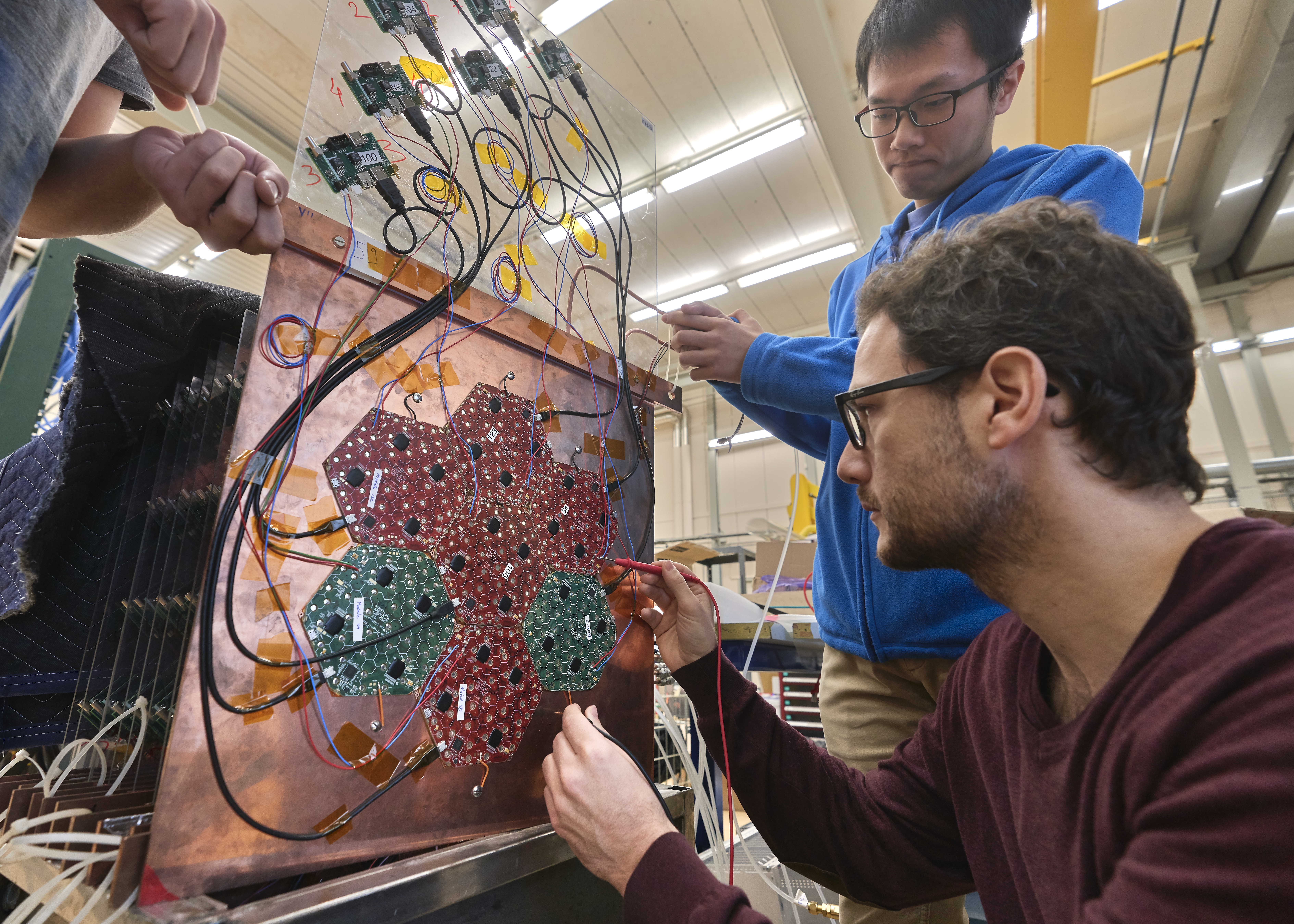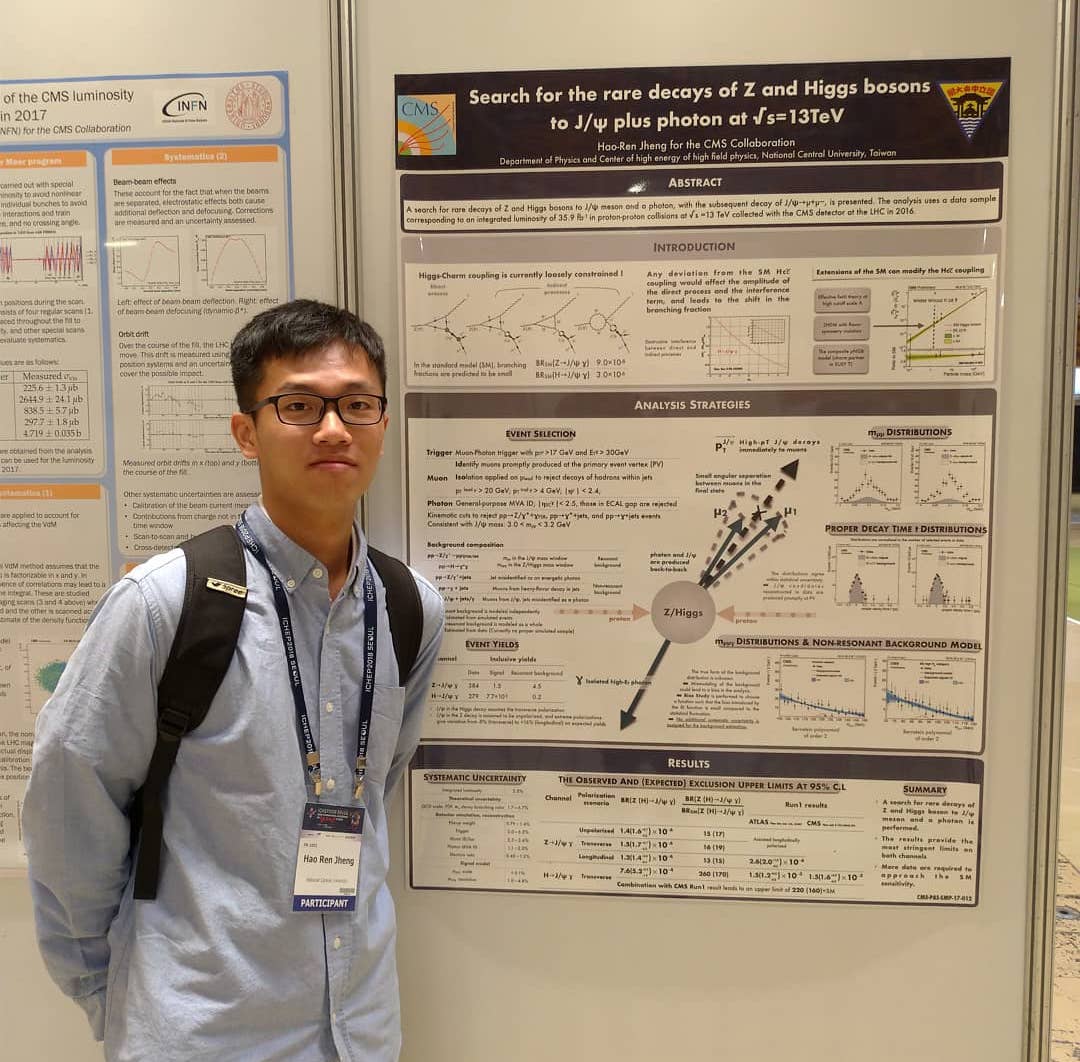Research
Physics Analyses
I joined the experimental high energy physics group at National Central University (NCU, Taiwan) to work on my undergraduate project and later my master thesis under the supervision of Professor Chia-Ming Kuo. I performed a search for rare decays of the Higgs and Z bosons into J/ψ meson and a photon, where the J/ψ meson subsequently decays into a muon pair, using data collected by the Compact Muon Solenoid (CMS) detector at Large Hadron Collider (LHC). The Higgs boson decay channel is one of the most promising probes to the Higgs-Charm coupling in the LHC environment. On the other hand, the decay process \(Z\to J/\psi+\gamma\) was the first search that related the standard model Z boson to a quarkonium state in CMS. I served as the contact person for the analysis and have successfully addressed all the concerns and recommendations brought up by the Physics Analysis Group conveners, review committee, collaborators, physics coordinators, and journal referees. The search was published in the European Physics Journal C, Eur. Phys. J. C 79 (2019) 94. I also participated in the analysis of a Higgs boson decays into two photons, one of which has an internal conversion into a muon pair. This decay channel is also named as Higgs Dalitz decay. I mainly worked on measuring the trigger efficiency and building up the background estimation method. The results were published in the Journal of High Energy Physics, JHEP 11 (2018) 152.

I am currently working on developing proper simulations of background processes for the Higgs Dalitz decay search, an important yet missing piece of the current analysis chain. Since the relevant background processes have large cross-sections due to the low di-muon invariant mass, efficient and realistic production of simulated events is a challenge. I implemented generator filters to select events that are similar in both the signal topology and the phase space and was able to bring a significant reduction of cross-sections, making the production of background simulations feasible. This work opens up several possibilities for improvement in the search, such as an advanced event selection optimization or categorization in the analysis with machine learning techniques, foreseeably leading to a better search sensitivity and an eventual observation of this decay channel in the future run of LHC.
Service Work
In addition to physics analyses, I worked on the measurement of electron veto efficiency for the 2017 and 2018 data-taking periods under the Electron-Photon Physics Object Group (E-Gamma POG). I improved and refined the evaluation of systematic uncertainties and laid the groundwork for the measurement. The conveners highly appreciated my presentations, works, and contributions to the group.
Beam tests
I participated in the beam tests for the CMS High Granularity Calorimeter (HGCal) project for High Luminosity LHC hold at CERN in the summers of 2016 [1] and 2017 and in October 2018. After I passed the oral defense at the beginning of my second year of master’s study, I went to CERN and stayed there for three months to attend the last beam test for the following two years. I applied the machine learning techniques in electron energy reconstruction and electron-pion discrimination with collaborators from the University of Minnesota. With Machine Learning, better energy resolutions for electrons with higher energy were achieved as compared to those attained with traditional reconstruction methods. I trained a classifier using simulation to discriminate electron-like pion events with training features that are the same as those used in the regression. A preliminary result showed that the classifier rejected more than 99.5% of pions while retaining 99% of the electrons. A summary of my study can be found in the appendix C in my thesis of master degree. Photo below shows me holding the prototype HGCAL detector planes, based on 6” silicon modules, at CERN in October 2018. The photo also appears in the CERN Courier Jan/Feb 2019 edition[2].

Reference
[1] You can find me in the blog posts Test-beam tales: Days 2 and 3 (the 6th photo) and Test-beam tales: Days 6 and 7 (the last photo)
[2] CERN Courier Jan/Feb 2019
